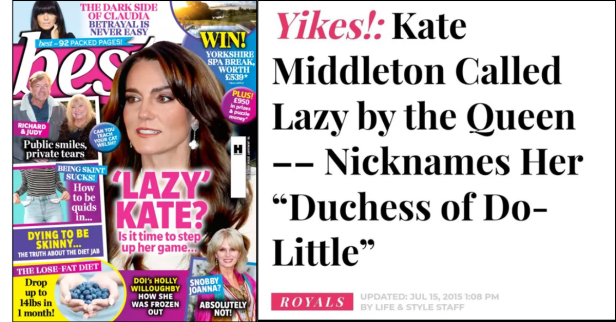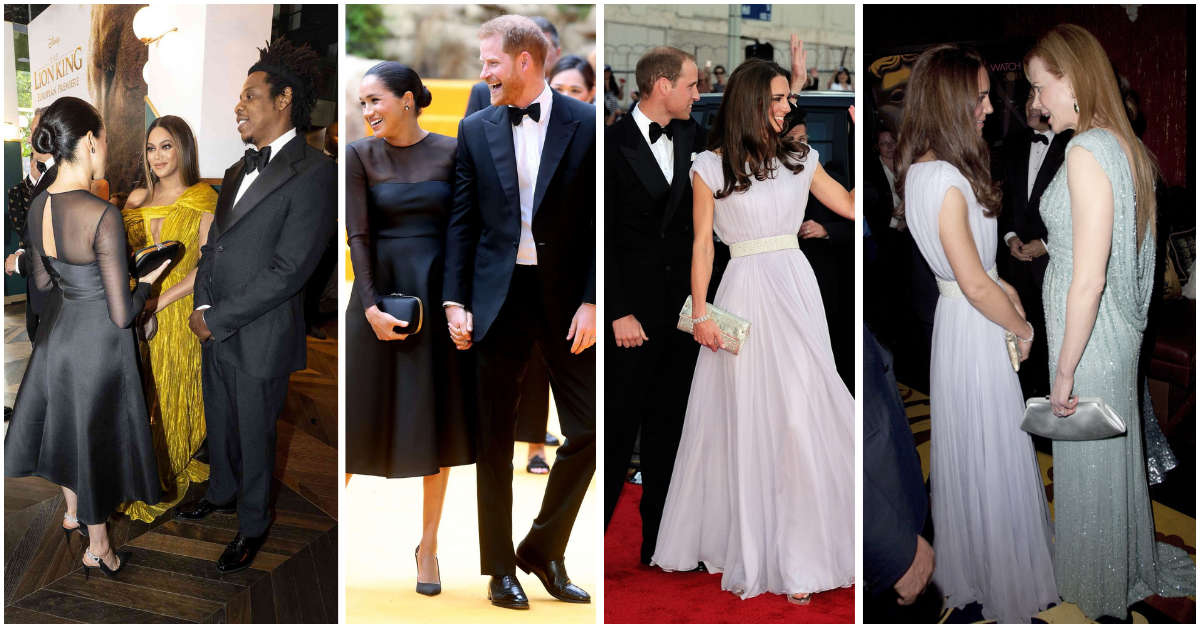The Daily Mail has once again tried to diminish Meghan Sussex, with its latest portrayal of her as a woman caught between two invented roles: a “celebrity royal” or a “royal celebrity.” The paper claims that her 2019 maternity leave, her guest editing of British Vogue, and her friendships with global stars proved a fatal pivot to self-promotion. This framing is more than misleading. It is a continuation of the hostile press strategy that has dogged Meghan since her wedding, while shielding the Royal Family and Kate Middleton from similar scrutiny. The truth is clear: Meghan was scapegoated for her visibility and impressive work, while others in the institution were given indulgence despite doing far less.
Meghan’s love for the limelight following her previous life on TV appeared to spark an irrevocable identity crisis for the Sussexes that still lingers more than seven years on. In the midst of her ‘long British maternity leave’ in 2019 and just two months after the birth of Archie, both Meghan and Harry were pictured greeting pop icon Beyoncé at the Lion King premiere in London. Questions were also raised over why the Duchess had carried out a mere 22 royal engagements in the seven months she spent as an unpaid guest editor of British Vogue, compared to Kate who managed 42 engagements during her own maternity leave. – Daily Mail
Royals and the Celebrity Double Standard
The idea that Meghan somehow crossed an invisible line by associating with celebrities collapses under the weight of royal history. Diana’s friendships with Elton John and George Michael were celebrated as part of her glamour. Charles cultivated ties with public figures, including Jimmy Savile, whose later exposure as a prolific predator made that association deeply troubling in hindsight. William and Kate invite footballers, pop stars, and actors to their high-profile events and even appear at film premieres such as the James Bond ‘No Time to Die’ or Top Gun: Maverick red carpet, yet their ties to celebrities are never framed as a crisis of identity.
When Meghan and Harry greeted Beyoncé at a London premiere, it became fodder for claims that she was chasing fame. When they stayed at Elton John’s villa, tabloids branded them hypocrites. Yet this outrage rings hollow given the royal family’s long record of enjoying celebrity proximity. The problem is not Meghan’s circle of friends but the racialized double standard applied to her. A Black woman in elite spaces was always going to be framed as “too much” by a media that has historically struggled to accept diversity within the monarchy.
Maternity Leave and the Workload Smear
The Mail’s fixation on Meghan’s 2019 engagements is particularly disingenuous. She was on maternity leave, caring for a newborn, yet still completed 22 engagements. More importantly, she curated British Vogue’s Forces for Change issue, which became the fastest-selling in the magazine’s history. It was unpaid, it elevated women leaders, and it showcased her ability to use her platform for meaningful impact.
By contrast, Kate Middleton has faced years of criticism for a weak work ethic. She was nicknamed the “Duchess Do-Little” long before Meghan arrived. Even Queen Elizabeth reportedly pushed Kate to take on more responsibilities. Yet Meghan, who balanced motherhood and an ambitious editorial project and countless royal engagements, is painted as lazy while Kate is spared scrutiny. Her numbers today remain low and stark.

The idea that Meghan was uniquely failing in her royal duties collapses when set against her record. She co-created the bestselling Together: Our Community Cookbook with the Hubb Community Kitchen, spotlighted women’s employment through Smart Works, championed animal welfare at Mayhew, and supported the arts as Patron of the National Theatre. In her first year, she carried out over 100 public engagements, took part in overseas tours. She also helped expand the monarchy’s outreach to younger and more diverse audiences. Her speeches on gender equity and mental health, along with her advocacy that influenced policy debates, showed she was using her platform to drive meaningful impact far beyond ribbon cuttings.
Media Framing and Institutional Complicity
Studies show Meghan’s treatment by the press was harsher than any modern royal. The Guardian found that between 2018 and 2020 she received twice as many negative headlines as positive ones. Another review revealed that 72 percent of stories about her in 2019 were unfavorable, compared to only 8 percent for Kate. Even the smallest gestures were weaponized. Meghan cradling her pregnancy bump was called “vain.” When Kate did the same, she was praised as nurturing.
This coverage was not accidental. Palace insiders routinely briefed against Meghan while defending Kate. When speculation about Botox swirled around Kate, a palace spokesperson shut it down. When Meghan was targeted by racist online abuse, palace aides stayed silent or downplayed the reality. The protection given to one duchess and denied to the other is still disturbing to this day. The monarchy benefited from Meghan being cast as a villain. It distracted from internal tensions, shielded Kate from her own weak record, and reinforced the image of the family as unchanging and white.
Final Thoughts
The Daily Mail’s attempt to brand Meghan Sussex as a “celebrity royal” ignores reality. She worked, she innovated, and she faced a level of scrutiny that was unmatched and unjustified. The real issue was never whether Meghan chose “celebrity” over “royalty.” The real issue was a press machine that punished her for being effective, modern, and visible, and a royal family that allowed her to be sacrificed for its own survival.
Meghan Sussex’s story is not one of failure but of systemic resistance. She was a woman of color who brought fresh ideas into an institution built on hierarchy and exclusion. The backlash says less about her choices and more about the institution and press determined to silence her.
Discover more from Feminegra
Subscribe to get the latest posts sent to your email.
